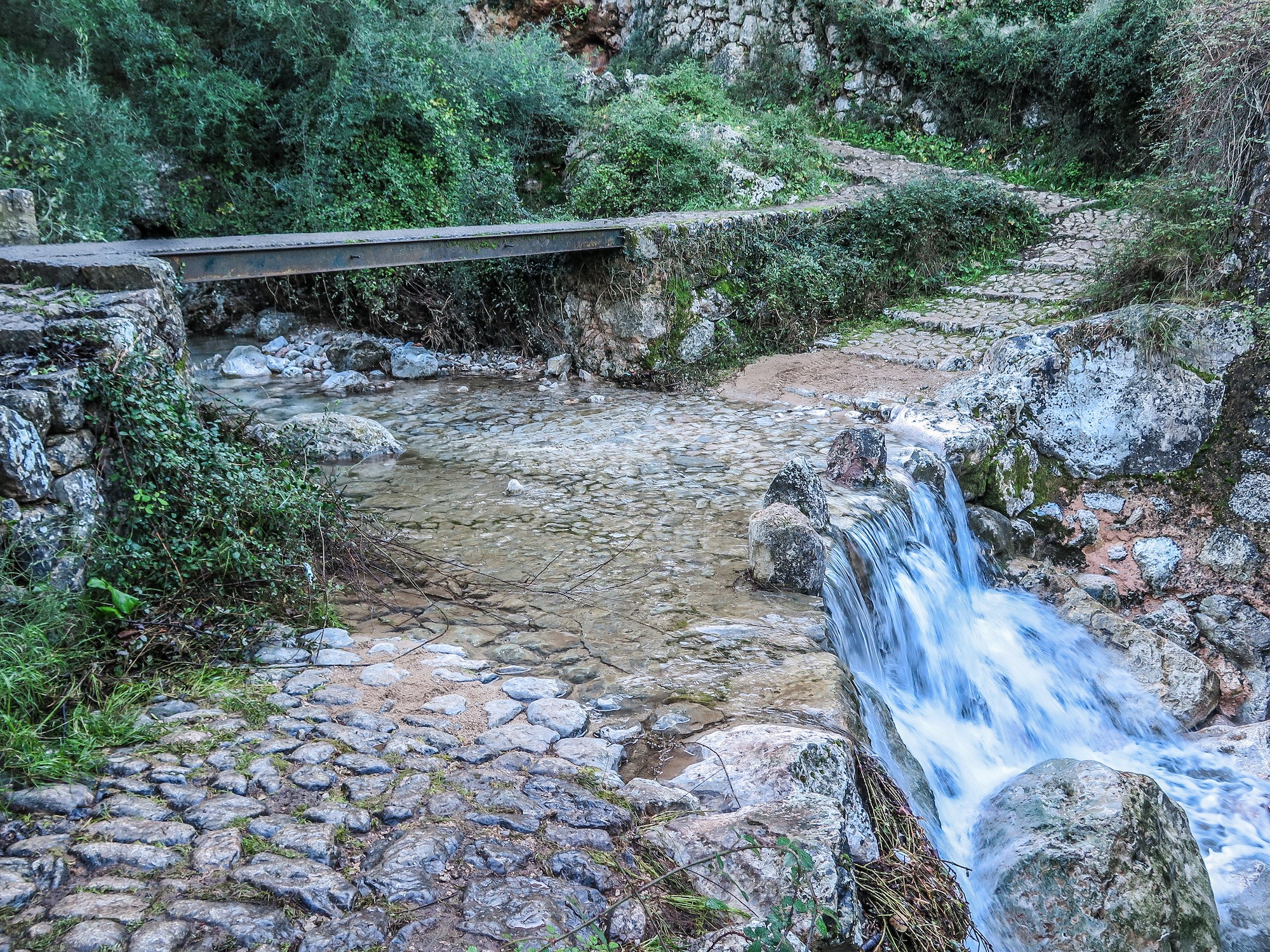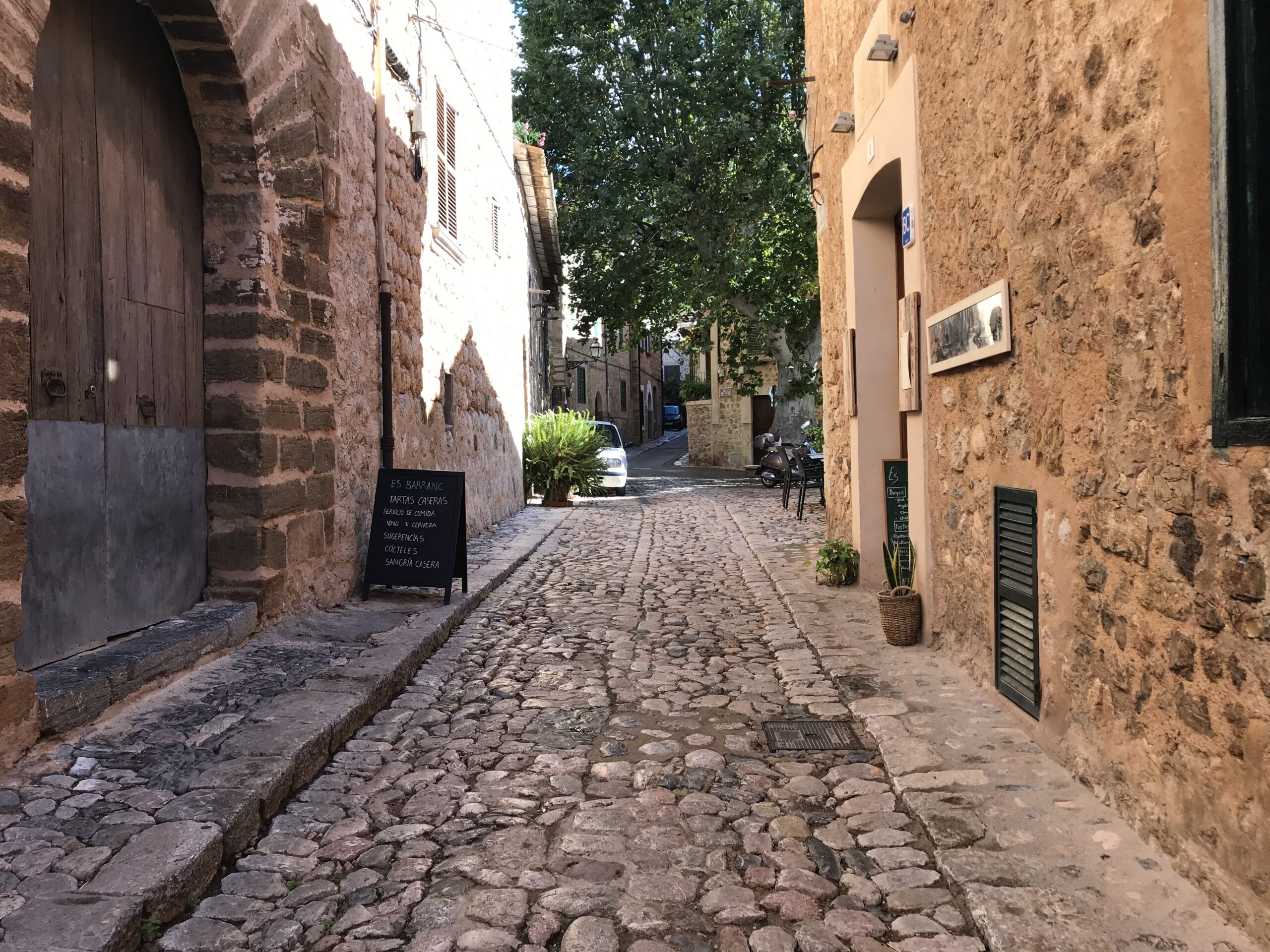Blog
EXCURSION TO THE BINIARAIX GORGE: THE ULTIMATE HIKING ROUTE IN THE TRAMUNTANA MOUNTAINS.

If you have visited or are planning to visit the Sóller Valley in autumn, you probably know that it is one of the best times of year to enjoy the Sierra de Tramuntana trails in every way. The mild temperatures, ideal for walking without the heat of summer or the cold of winter, and the less crowded trails make the landscape a unique privilege and an unrivalled attraction for lovers of hiking, nature and mountain sports. That's why today we're going to talk about one of the most emblematic routes in the Sierra de Tramuntana, if not the most emblematic, and discover it to the fullest at one of the best times of the year to do so: El Barranc de Biniaraix in autumn.
EL BARRANC DE BINAIRAIX
Barranc de Biniaraix is a canyon formed by the L'Ofre stream, located between the Sierra de Son Torella, L'Ofre and Els Cornadors, through which the Barranc de Biniaraix trail runs. A man-made stone stairway runs between terraces in this magical spot in the Tramuntana mountains. It was built to connect the Sóller Valley with the Sanctuary of Lluc, making it one of the most important pilgrimage routes in the mountains. It was also used to connect the Pla de Mallorca with the Tramuntana via Orient and Alaró. In 1944, it was declared a site of cultural interest due to the extraordinary architecture that can be seen along its 1,932 steps, which are over 500 years old.
Without a doubt, this is a work that reflects the art of dry stone construction. But Barranc de Biniaraix is not only home to the current 500-year-old path, which forms part of and was the catalyst for the creation of the famous dry stone route GR-221 route, but there is also another much older path, the "cami vell", which is the origin of the ravine and was used by the first Mallorcans to make pilgrimages and cross the Sierra de Tramuntana. This path is considered a sacred place because it was a place of pilgrimage where the deceased were buried in its countless caves. Among the most famous are the cave of s'Alova, due to its large size and importance, as it was there that the upper classes of the first prehistoric settlements in the Sóller Valley were buried, and the cave of Ses Afàbies (tinakas), where water was collected from the stalactites using these utensils. Some of them can still be seen today.

AUTUMN EXCURSION TO THE BARRANC
As we have mentioned, the Barranc de Biniaraix is a karstic canyon shaped by the friction of water and bordered by Es Cornadors and the Son Torella mountain range. It is therefore a place through which water flows. This makes this excursion one of the best options at this time of year. During these months of the year, with the rains, we can see water flowing almost all year round. Water runs down the slopes of the Barranc, organised into small agricultural plots delimited by terraces, where olive, carob and almond trees are grown.
That said, we will start our tour from Plaça Constitució, located a 2-minute walk from the Alcázar Hotel, and head towards Binia raix along Carrer de Sa Lluna. When we reach Biniaraix, we can take the opportunity to make a brief stop right next to Ses Rentadores de Biniaraix,
where the path to Barranc de Biniraix begins. After a short break, we will start our excursion through this magical place, which reflects the integration of dry stone constructions into nature. Once here, we just have to follow the signs and markings of the GR-221 trail to walk the Barranc de Biniaraix trail and enjoy the route and the fantastic landscapes of the Tramuntana mountains, the Sóller Valley and even the Mediterranean Sea.
A few minutes into the route, we will be able to appreciate the impressive construction work that went into it, as well as the beautiful views of the small "llogaret" (resting place) of Biniaraix with its bell tower in the background. During the ascent, we will gradually enter the Sierra de Tramuntana. We will pass over several bridges and even cross a narrow pass between the mountains called S'Estret or Sa Campana, where there is a large waterfall and where it is said that if you throw a small stone towards the waterfall, it will bounce and sound like a bell. Once we reach this point, we can choose between continuing towards L'Ofre or taking the path on the right towards Font de Can Cati, which will allow us to take an alternative route and descend from Barranc de Biniaraix in a circular fashion.
We recommend choosing your path carefully, as most of the route is a 756-metre climb between Biniaraix and the top of the Barranc, so it can be a tough climb. Therefore, at this point, you can decide whether to continue towards L'Ofre and then descend back to Biniaraix.
There is also another easier and less strenuous option for enjoying the Barranc: we can take the bus up to L'Ofre and from there descend the Barranc to Biniaraix until we reach Sóller again. To do this, we just need to go to the Plaza América bus stop, a 5-minute walk from the Alcázar Hotel, and take the 231 Port de Sóller-Alcúdia bus line. Regardless of the route you take, you will eventually descend and arrive back at Ses Rentadores de Biniaraix. Once there, we recommend going down to the square in Biniaraix and having a drink in one of the two bars in the area to rest and recharge your batteries before returning to the centre of Sóller with a pleasant walk downhill, after having completed one of the most historic and iconic excursions in the Sierra de Tramuntana.
If you are staying at our hotel and would like more information about the Barranc de Biniaraix and other hiking trails in the Tramuntana and surrounding areas, as well as other places to visit in the Sóller Valley, please do not hesitate to ask our reception team, who will be happy to assist you.



